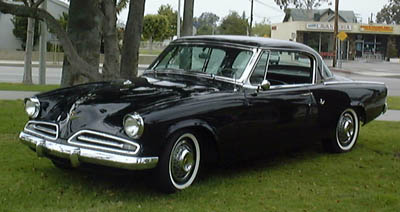
Are cars and car companies that are awarded the "Car of the Year" award cursed? Or are the people at Motor Trend just clueless about cars?
It is that time of year again, and CNN is hyping Motor Trend's "Car of the Year" selection process (Motor Trend being a sister company). Unfortunately, these car magazine awards are really meaningless. Some are bought outright, others are awarded to loyal advertisers. And not having the advantage of hindsight, in many cases, real LEMONS are selected, year after year.
Motor Trend seems to be the most astute at picking losers and calling them "Car of the Year." In fact, it is almost a curse, in a manner of speaking. If you look at the historical record, nearly every car selected by Motor Trend was a piece of crap, or at best, mediocre. Only once in a while did they pick a really significant car as "Car of the Year." Most of the time they blew it - big time.
Motor Trend often defends its decisions by arguing that the car in question was "significant" or ground-breaking. In other words, the Vega might have been a piece of crap, but it represented a serious move by GM to get into the small-car business. This may be true, but I am not sure we should reward effort, when it results in abject failure - particularly when there are others who are making the effort and succeeding. I also think this is just a post-hoc justification for horrific choices. And if you look at their historic record, it seems the criteria for picking cars changed over time.
Few of these cars were good choices for consumers at the time. A late-model secondhand car of higher quality could have been had for the same price and delivered better service and value. And as you go down this list, you see a lot of cheap and cheaply made cars on the list. You don't see the Mercedes S-Class or BMW 5-series anywhere - not even a Lexus! (Arguably the original Lexus sedan was more ground-breaking than any other car offered that year). The iconic BMW 3-seris (E-30 platform) arguably is more relevant that all of these cars combined (and is the model for many of these "Me too!" marques). Yet nowhere is it mentioned.
The point is - and I think you will agree with me after reading this list - that picking your own car based on "Car of the Year" is pretty idiotic, as the choices are often dubious, poor, or just plain strange. It is not an indicia of quality, reliability, or value. In fact, one could argue, after reading this list, that cars branded with "Car of the Year" should be avoided at all costs!
Anyway, here is a list of their "Car of the Year" cars and how they have fared. Even the cars of recent years are dubious choices. Warning, you may need to take a shower after reading this list! There are some real turds!
2022 Lucid Air: The Lucid what? Yea, my reaction, until I realize the genius of it. Why pick a car that actually exists, when you can pick one that doesn't? At least for most of us. No one will criticize your choice if the car is nowhere to be found. Oh, sure, you can put down a $300 deposit on it, just like the Elio. And it sells for the low, low price of $70,0000. You can buy a Ford F150 E-Truck for that. And they sell them. Real ones. When the award if given with the preface of:
A year or two ago, most of you and many of us might have said, "Lucid? Are they still going? I thought they were foundering like Byton, Faraday Future, Dyson, Nio…"
You have to whether this is vaporware or not - it was introduced in 2016 and just started limited production. One wonders whether this is a chance to pump up the ailing stock price and whether Lucid paid big bucks to get this "award." And a sedan? In this era of SUVs? If you really want to blow seventy grand on a luxury EV sedan, Tesla is selling them all day long. What is the motivation to try out this niche player? This isn't Lucid Thinking, it is ludicrous. The car of the year award is now officially a joke.
2021 Mercedes E-Class: Huh? They still make the Ford Taurus? That's what I though when I first saw this car. It looks like the blob that was the third generation Taurus. And German cars? Not a very good value anymore - expensive to buy and own and repair, and going off to the junkyard long before more pedestrian makes - as their esoteric repairs exceed their resale value. Meh - I would rather have a loaded Hyundai or KIA than this overpriced POS.
2020 Corvette Stingray: The curse strikes again! It is not that the car is bad - far from it. Finally the Corvette is a serious "supercar" with mid-engine configuration, just as Ferrari starts to offer front-engine cars again. Problem is, you can't find one to buy anywhere. Between the strike at GM and the CoVid shutdown, supplies have been limited, dealers are marking up prices accordingly - and deliveries are pushed out to 2022 and beyond. So the "affordable supercar" is no longer affordable.
 2019 Hyundai Genesis G70: When I first saw the Genesis on display at the Amelia Island Concours d'Elegance, I was intrigued. Here was a car with BMW-like design, but Korean level of quality and reliability (read: higher than BMW) but with more Korean-like prices. Surely this would sell like hotcakes, right? Wrong. The problem with selling status cars is that they have to have status. BMW sells a lot of cars to clueless people who buy them simply to show-off to people they don't even know. They buy BMWs with automatic transmissions these days - because the "ultimate driving machine" and the "sports sedan" crowd went away after the demise of the E30. Today, it is all about status and showing off how much you spent. And you can't do that with a Hyundai, never mind the fact it may be a better car.
2019 Hyundai Genesis G70: When I first saw the Genesis on display at the Amelia Island Concours d'Elegance, I was intrigued. Here was a car with BMW-like design, but Korean level of quality and reliability (read: higher than BMW) but with more Korean-like prices. Surely this would sell like hotcakes, right? Wrong. The problem with selling status cars is that they have to have status. BMW sells a lot of cars to clueless people who buy them simply to show-off to people they don't even know. They buy BMWs with automatic transmissions these days - because the "ultimate driving machine" and the "sports sedan" crowd went away after the demise of the E30. Today, it is all about status and showing off how much you spent. And you can't do that with a Hyundai, never mind the fact it may be a better car.
So sadly, despite the fact the car is worthy, sales have been lackluster. And given the trends in the worldwide auto market (declining sales, overproduction, overcapacity) one wonders how long Hyundai can hold out, as they are likely losing money on each sale.
The question isn't why they awarded the car this year, but why not in previous years (Oh, right, you have to pay).
2018 Alfa Romeo Giulia: Proof that the curse still exists. Alfa Romeo left the US market, tail between its legs, in the 1980's, after coasting for years selling "The Graduate" edition spiders, hoping that Dustin Hoffman's sexiness was enough to sell cars to nostalgic Baby Boomers. It took Mazda and the Miata to show that you could build a European style sports car and not bankrupt the owners in the process.
The problem this time around is, well Fiat Chrysler, well at least the Fiat part. The company is losing money, and long before its iconic CEO unexpectedly passed away, he was trying to sell the company to someone else. While the company is minting money on Jeeps and RAM trucks (both of which are highly profitable, but like Fiats, have horrible quality reputations) the European arm is hemorrhaging cash. It remains to be seen if a merger with Renault/Nissan will pan out. The coming recession and declining car sales in general may force the issue.
Americans haven't taken to the reintroduction of the Alfa nameplate. Many younger Americans probably don't resonate with it, and older Americans who do remember the marque probably still shudder at the memories of the repair bills.
2017 Chevrolet Bolt EV: At a time when gas prices are at all-time lows and an incoming President promises to roll back environmental regulations and kill off wind farms, the choice of an EV seems odd. In an era of monster pickup trucks and monster SUVs, when low gas prices are killing the EV movement, the choice of a tiny car that runs on batteries seems odd - particularity when Motor Trend was so tardy in spotting the Prius as car of the year.
Make no mistake about it, GM's commitment to EV's is based entirely on CAFE standards. Sell one Bolt for a loss and get a credit of 295 equivalent MPG. This allows you to sell 20 gas-guzzling SUVs with a profit margin of well over $10,000 apiece.
Don't get me wrong, the Bolt may be a good car and well-engineered, and the first EV to sell at a good price point AND have good range and quality (the Mitsubishi EV is sort of crappy and the electric Hamster is nice, but only goes 85 miles on a charge).
This is the sort of "car of the year" pick that leaves you scratching your head.

So sadly, despite the fact the car is worthy, sales have been lackluster. And given the trends in the worldwide auto market (declining sales, overproduction, overcapacity) one wonders how long Hyundai can hold out, as they are likely losing money on each sale.
The question isn't why they awarded the car this year, but why not in previous years (Oh, right, you have to pay).
The problem this time around is, well Fiat Chrysler, well at least the Fiat part. The company is losing money, and long before its iconic CEO unexpectedly passed away, he was trying to sell the company to someone else. While the company is minting money on Jeeps and RAM trucks (both of which are highly profitable, but like Fiats, have horrible quality reputations) the European arm is hemorrhaging cash. It remains to be seen if a merger with Renault/Nissan will pan out. The coming recession and declining car sales in general may force the issue.
Americans haven't taken to the reintroduction of the Alfa nameplate. Many younger Americans probably don't resonate with it, and older Americans who do remember the marque probably still shudder at the memories of the repair bills.
2017 Chevrolet Bolt EV: At a time when gas prices are at all-time lows and an incoming President promises to roll back environmental regulations and kill off wind farms, the choice of an EV seems odd. In an era of monster pickup trucks and monster SUVs, when low gas prices are killing the EV movement, the choice of a tiny car that runs on batteries seems odd - particularity when Motor Trend was so tardy in spotting the Prius as car of the year.
Make no mistake about it, GM's commitment to EV's is based entirely on CAFE standards. Sell one Bolt for a loss and get a credit of 295 equivalent MPG. This allows you to sell 20 gas-guzzling SUVs with a profit margin of well over $10,000 apiece.
Don't get me wrong, the Bolt may be a good car and well-engineered, and the first EV to sell at a good price point AND have good range and quality (the Mitsubishi EV is sort of crappy and the electric Hamster is nice, but only goes 85 miles on a charge).
This is the sort of "car of the year" pick that leaves you scratching your head.
UPDATE: The Bolt is no more or will be, shortly. The curse lives.
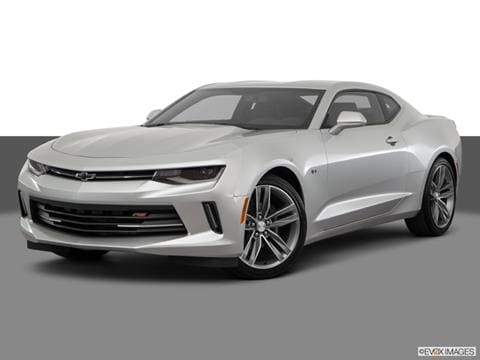
What should be commended about all three "muscle" cars from the US (Mustang, Challenger, Camaro) is that even in "base" trim, they offer engines that crank out 300 HP and get 30 mpg on the highway - and are far safer and handler better than their original 1960's version. As Jay Leno noted, in his review of the "Tantrum" Challenger, a Ford Focus of today could probably beat the original Hemi Challenger from the 1960's. Automotive technology has progressed so much in 40 years. High time Motor Trend noticed it.
So, I have to say, finally in 2016, they made a good choice. I said the same thing in 2015, however, and that later turned out to backfire in a big way. So, if you work at GM, be very, very nervous. The Motor Trend curse is upon you!

UPDATE: NOVEMBER 2015. Well, the curse is still in effect. After being named "Car of the Year" VW now faces criminal and civil liability for programming its diesel models to pass emissions, even though they pollute far more than they should. Massive recalls and overhauls of many cars may be required. Some are saying that affected cars may have to be bought-back and crushed. Billions of dollars in costs, legal damages and lost sales. The curse doesn't get worse than this! Even GM fared better with the Vega!
2014 Cadillac CTS: Cadillac wins it again. The boobs at Motor Trend really think that the Caddy badge is "the standard of the world" - a slogan that referred to interchangeability of parts in 1908, not overall quality, performance or resale value. Is the CTS a great car? Let me ask you this: how many have you seen on the road? (people from the midwest, put your hands down). Now how many C-class Mercedes and 3-series BMWs have you seen? Yea, Caddy has yet to really crack that market. Now, don't get me wrong, I think it is nice that Motor Trend believes in giving out the award to the "Special Needs" students now and again, so that "everyone's a winner!" - right? But I am not sure that they deserve this award a second time around. Yea, that's right, they handed them "Car of the Year" for this load in 2008 as well! There are some things to compliment Cadillac on - being brave enough to put a four-banger in a Cadillac (something BMW dealers refuse to let BMW do in North America!) and offering an 8-speed transmission. The new GM-Alpha platform (which the Caddy doesn't share with low-life Chevies, yet) is lighter weight than its predecessor, and is set up to handle rear and four-wheel-drive with a near 50/50 weight balance. OK, we all want to root for the underdog. But when it comes to my wallet, I think I would buy a secondhand 3-series (preferably hard-top cabrio) than risk it on something from GM. Sorry.
UPDATE 2019: Sales of "cars" are in the tank, and sales of Cadillac's, other than their SUVs are struggling. The curse strikes again!
2013 Tesla Model S: The Tesla is an interesting car, but the Motor Trend "Car of the Year" curse could kill it off. This is an example of Motor Trend trying to pick a car they think is "significant" as opposed to a popular car or a car made by a company that PAID a lot of money for ad space (act shocked). The problem with the Model S is that like Obama's Nobel Peace Prize, it is a bit premature (even he was embarrassed to get it) as hardly any model S's have sold. And even with its amazing range (in the more expensive model) it still is not a practical car for driving long distances. It ain't going from Detroit to Orlando in 24 hours. And at its current price, it will not significantly affect the electric or hybrid car markets in any big way. Meanwhile, Toyota labors on for more than a decade making the Prius actually work - and offering a plug-in version this year, and they get bubkis. But given the nature of the "Car of the Year" award curse, Toyota is probably just as happy not to get the nod. A far better bet for a consumer, if you want an electric car, is a Toyota Prius Plug-in, as it is actually cost-effective, over time, and a proven quantity.
UPDATE November 2015: After being called "the best car we've ever driven" by Consumer Reports, the car fell fast from grace, now being listed as "not recommended" due to numerous - get this - electrical problems (in an electric car, no less). Falling oil prices and cheap gas make the car an even harder sell based on economics, at least for the time being. Too bad, too, such a nice car! But cursed by Motor Trend! (Update, 2016: The Koch Brothers have made it their goal in life to kill the Tesla. Meanwhile, Tesla struggles with State governments who want to protect the corrupt dealership networks and prevent Tesla from selling directly to the public. Stay tuned, this could be another Tucker kind of deal!).
UPDATE 2020: Tesla makes more money selling carbon credits than it does selling cars. And more and more car companies are now getting into the electric car business. How long can this last?
UPDATE 2022: Elon Musk has turned into some weird Republican anti-vaxxer conspiracy theorist. This does not bode well.
2012 Volkswagen Passat - VW has again opened a factory in America and decided to de-content their cars. The new Passat has a twist-beam rear suspension, apparently stolen from the 1981 Chevy Citation, also a Motor Trend award winner. A thrashy five-cylinder engine replaces their smooth and economical fours. And the price has been slashed to 16 grand, to attract more sales. The last time VW did this, it did not work out well. May I suggest a late-model Camry or Accord instead?
UPDATE November 2015: See my comments above regarding the diesel fiasco. Cursed again!
UPDATE November 2015: See my comments above regarding the diesel fiasco. Cursed again!
2011 Chevrolet Volt - the Volt is a technological tour-de-force, but then again, so is the Prius, which has been on sale for a decade now. The Prius is cheaper, uses proven technology, and is now available in plug-in form. Oh, yea, it gets better gas mileage - way better - in gasoline mode. While GM should be commended for taking a chance on the Volt, a better value for the consumer is a secondhand Prius or a plug-in Prius.
UPDATE November 2015: The Volt has not been a big seller, and a new model is slated for 2016. Some are calling electric or hybrid cars like the Volt "compliance cars" designed to groom the company's image and comply with Federal mandates to build EVs. Whatever the case, GM only sells a few thousand a year. Not a real game-changer, like the Prius.
UPDATE November 2015: The Volt has not been a big seller, and a new model is slated for 2016. Some are calling electric or hybrid cars like the Volt "compliance cars" designed to groom the company's image and comply with Federal mandates to build EVs. Whatever the case, GM only sells a few thousand a year. Not a real game-changer, like the Prius.
2010 Ford Fusion - the car that saved Ford from bankruptcy is quickly showing itself to be like most other Fords - not very well built. Most folks bought these cars based on price, and also because Ford didn't take the bailout money, unlike "Government Motors". Ford may regret this decision, as the new GM and Chrysler, stripped of debts, are emerging from bankruptcy with wads of spare cash and new designs on the table. The dowdy looks of the 2007-2009 models have been replaced with an almost Chrysler-like aggressive front end shown above. But I think a Toyota Corolla is still a better bet that the Fusion. But the real competition for the Fusion is the new Chevy Cruz, if you really must "Buy American."
2009 Nissan GT-R - When I went to Japan back in the 1990's the hot car to have was a "Nissan Skyline GT-R" and I tried to rent one, without success (just as well, I likely would have wrecked it, driving on the wrong side). It was a Japan-only spec car, not for sale in the USA. Since those heady days, the designation "GT-R" has always had caché with the rice-racer crowd, and Nissan decided to at least badge a car with the letters (if not the name) for US sale (The real Skyline is apparently available as an Infiniti). A nearly $50,000 car, it represents Nissan's entry into Luxury-Performance territory, albeit at the lower end. This ain't no $20,000 Shitsubishi! (So the kids might not be buying these cars.) And it arguably is a huge improvement over the unloved and unlamented 300Z cars, including the last bloated iteration (yuk!). The GT-R probably represents one of Motor Trends few good picks in recent years. But, it is still a Nissan.
2008 Cadillac CTS - Cadillac has been trying to remake itself as a serious BMW-beater. But it has a ways to go. The oddball slab-sided styling is a love-or-hate affair, and the quality of Cadilliac is, well, making strides at least. But Caddy has been actually offering manual transmissions in its cars, and pushing performance rather than landau tops. Driven by the rear wheels - the way a sport sedan is supposed to be - it even comes in a sportwagon offering. While a great effort by GM, Motor Trend is awarding for effort, and not for execution. A BMW 3-series is still a better car - and one with a far better resale value, at this point. Motor Trend likes to root for the home team, and 2008, GM needed all the fans it could get. The resale on a 2008 3-series, which is what this Caddy hoped to be, would be far better.
2007 Toyota Camry - Camry's are good cars. Fairly inexpensive, reliable, well-made, and, well, boring. They get you from point A to point B with little fuss, and will go about 200,000 miles and then completely fall apart all at once. I had a 1988 Camry and it was a well-appointed, if not boring car. In the 1990's, Camry styling got more and more exotic, starting with the new "man in a hat" Toyota logo, and then going downhill from there. In 2007, they decided that the Camry needed a big ZIT on its nose, so they put one on. I am not sure why. Toyota decided to get into NASCAR racing, even though Camry's never have had V-8 engines or rear wheel drive. Perhaps this was part of Toyota's drive toward mediocrity. Or perhaps the bad habits of Americans were starting to take hold in Japan. The Camry is still a good car, of course. Perhaps the people at Motor Trend got tired of picking total pieces of crap and said, "Let's pick the Camry this year, what could go wrong?" What went wrong, of course, was the unintended acceleration fiasco, which even if bogus, stained the reputation of the marque, and caused massive recalls and lawsuits. The curse of Motor Trend strikes again!
2006 Honda Civic - Hondas have been reliable cars that handle pretty well. In recent years, however, people have complained that the Civic has gotten more and more bloated, the styling more and more bizarre, and the quality has not been as good as in the past. Why Motor Trend picked this as the year to honor Honda is a good question. Arguably, earlier model Civics were more profound market-changers than this bizarrely styled iteration (particularly when you look at the pieces of crap that won in earlier years). Alas, the trouble with Honda got worse after this car came out. The next generation Civic was panned as poorly designed and poorly executed, with cheap interiors and outdated engines and transmissions. Maybe once you win Car of the Year, you figure you can just phone it all in? The curse strikes again!
2005 Chrysler 300 - this is the second Chrysler 300 to appear on their list, the first being the forgettable front-wheel-drive 300M of 1999. The new full-sized Chrysler was designed during the rein of Mercedes, and uses some Mercedes cast-off bits to good advantage. The rear end is from the old E-class, and is hardly a slouch. While many hailed this as a return of the rear-wheel-drive American sedan, it really was more of a hand-me-down Mercedes chassis, with an American V-8 up front. Not a bad car, really. Sales have slackened off in recent years, as the design has aged - over seven years! (a lifetime in the automotive world). One of Motor Trends better picks. Myself, I would have bought a used Mercedes or BMW at the time (and did).
2004 Toyota Prius - the Prius has proven, over time, to be a good-seller, and is now the most popular car sold in California. But the Prius was sold in America starting in 2001. What took them so long? It won't be built in America until 2015 at the earliest, so the "made in North America" requirement is not the key. I think, in retrospect, even Motor Trend realized that the hybrid powerplant was the most significant advancement in automotive technology in the last 50 years - perhaps 100. And they figured they'd better get on the bandwagon, better late than never. The selection of the Prius wasn't an error on the part of Motor Trend. Waiting three years to do it, was.
2003 Infiniti G35 - Infiniti was the "rocks and trees" company that famously didn't show us its cars. When they did, we said, "oh, make it go away, my eyes hurt!". Basically rebadged home-market Nissans, Infinities are really nothing special, and of the big-3 Japan makers, Nissan is a solid #3. Nissan has been chasing BMW (like so many others) with its "G-series" and has done pretty well with it. While not a bad car, paying a lot of money for an Infiniti is like paying a lot of a Nissan. It makes no sense. This was not a horrifically bad choice of a car, just not a particularly stellar one.
2002 Ford Thunderbird - the 11th generation "retro" Thunderbird never sold well and was discontinued - just like the original two-seat predecessor. It also illustrates the problem with "retro" styling - where do you take it? While it wowed them on the show-car circuit, it was never a performance car, but a boulevard cruiser, and was seen as too feminine. At the time, too, the market was glutted with two-seat roadsters. The car was withdrawn from production and not replaced. Likely, Ford lost money on every one sold, as they did on the original two-seat 'birds. This car has spawned more "If only they had...." conversations than any other, though. A better bet at the time would have been a Miata, or Z3, which at least had some sporting pretensions.
2001 Chrysler PT Cruiser - the retro-styled PT Cruiser was an initial success. However, its plebeian economy car (Neon) underpinnings became readily apparent. Underpowered and poorly built, they did not survive long on the road - and once ubiquitous, are already a rare sight today. Chevrolet had slightly more success with its larger HHR, but that, too was withdrawn from the market. Retro is fine and all, but as a design exercise, it takes you nowhere. You can't "update" or restyle a retro car, only drop it entirely.
2000 Lincoln LS - Lincoln gets into the game this time, trying to make a "Sport Sedan" just like BMW! And like when George Bush pronounces the hard words right, you want to congratulate them for trying. Not a bad car, the LS never really found its market. Based on the DEW98 platform, which it shared with other Fords and Volvos, it had the potential to be a real contender in the upscale luxury sport-sedan market. The problem is, of course, that most of the people who buy imported sports sedans were burned before by Ford and GM products. Do you really trust Ford to not screw you with some warmed-over Taurus yet again? Or do you cough up the extra bucks and buy "the real deal" and not worry so much? I know what I did - I bought BMWs. The landau roof and opera light types were equally as mystified by this car, as it could not be ordered with either! A few thousand were even made with manual transmissions (now that was expensive to certify with the EPA!). They pulled the plug in 2006, after about a quarter-million sales, which is boutique-level. Today, Lincoln struggles with an identity crises, as it has the reputation of being a very ugly rebadged Ford. Mercury has already succumbed to the inevitable. Can Lincoln be far behind? If there is a "Motor Trend Curse" this car was certainly victim to it!
1999 Chrysler 300M - the LH cars arguably saved Chrysler a second time, in the 1990's. The basic chassis design was copied from the Renault AMC "Eagle" Premier, that went into production shortly before AMC folded - into Chrysler. The 300M was hardly a successor to the fabled "300" cars of the 1950's and early 1960's. Rather, it was a badge-engineered LH car with a slightly tuned motor. Hardly the stuff hot rods are made of. Today, it is rare to see an LH car still on the road, and the 300M is a largely forgettable automobile. Not a bad choice by Motor Trend, just not really a great one.
1998 Chevrolet Corvette - You either love Corvettes or you just don't care about them. No one really hates them, they just, well, don't give a shit. I guess I have to be in the latter camp. They are nice cars, but the reliance on pushrod V-8s strikes me as somewhat retrograde. The fifth generation (C5) Corvette was an improvement over its predecessor, and with the introduction of the Z06 model, Chevy started getting serious about performance again. On the other hand, these are called the cars "never sold, bought, or driven" and after seeing my neighbor struggle to sell his, I can see why. Since the introduction of the C5, Chevrolet has chopped off the horrific overhangs on these cars (much to the horror of the Corvette faithful) which, like DeLorean's sideburns, were so out of style. Let's not even talk about moment of inertia! Again, this is not a bad pick, but I wonder why they picked 1998 instead of the C5's introduction year of 1997, particularly when you see what they DID pick for that year. If you want to have some fun and kill a few hours this afternoon, go on YouTube and google "Corvette Accident" and see all the fun. These tail-happy monsters can bite their owners on the ass, when they turn the Automatic Stability Control off. Oh, right, many of them don't have ASC.... Lift-throttle oversteer kicks in, and it is fun to watch! And no, your insurance doesn't cover you when you plant it into the wall on track day....
UPDATE: See my posting on the C5 - the car "no one drives, sells or buys"
UPDATE: See my posting on the C5 - the car "no one drives, sells or buys"
1997 Chevrolet Malibu - Back in the 1960's, the Malibu was one of those midsized platforms that you could stuff a big V-8 into - and so the Chevelle was born. By the 1970's, the car had turned into a joke. The 1980 model was so cheap, the rear windows didn't even roll down! The car has soldiered on, the name being resurrected for a front-wheel-drive platform. The gurus at GM claim that the names "Impala" and "Malibu" have great meaning and value. Perhaps to idiots and people who live in trailer parks. To me, they spell poorly made cars with no imagination, and remember, I used to work there. Why this 1997 model was chosen as "Car of the Year" is anyone's guess, other than maybe GM paid a lot of money for ad space that year. The 1997 Malibu was a boring car of mediocre quality that was largely forgettable in terms of styling, performance, interior appointments, or, well, anything. The only nice thing you can say about it is that it was better than its successor, the oddly proportioned Malibu Maxx. The Malibu is still around today, and the new Impala will supposedly be on a stretched Malibu platform. Pardon me if I take a pass (or a piss) on either. A 1997 Camry or Accord would have been a better choice for a buyer at the time - even a used 1995-1996 model!
1996 Dodge Caravan - the Caravan was a ground-breaking car, back in 1984 when it was introduced. Motor Trend decided to go with the Corvette that year. How ground-breaking is the Caravan? Smithsonian has a 1984 model in their collection. By 1996, Chrysler was already on its third generation - and the writing was on the wall. GM and Ford offered minivans - and then promptly abandoned the market in favor of SUVs. The real killer has been Honda and Toyota, who continue to offer higher-quality minivans with greater content, at competitive prices. 1996 was an odd year for M/T to award Chrysler - it was the beginning of a downhill slide for the company and their minivan market share. The Motor Trend Curse strikes again?
1995 Chrysler Cirrus - a boring mid-sized car that was never a very good seller for Chrysler. Cramped on the inside, and offering nothing more than the Neon buyer could get, for nearly the price of a larger LH car. The Cirrus made its bread-and-butter living in car rental fleet sales, much as its successor Sebring and 200 do today. A better buy would have been a 1993-1995 Corolla, Camry, Accord, or Civic.
1994 Ford Mustang - two Mustangs appear on this list, and arguably, other than the bloated 1973 model, Motor Trend picked the ugliest of the lot - the Mustang II (see below) and this turd. The previous generation Mustang brought the marque back from the dead, by providing a robust rear-wheel drive platform and a powerful 5.0 liter V-8. It stayed in production for 14 years. Arguably that was a far more significant car that this blob of shit. I still remember the day I saw the original 5.0 Mustang at a friend's house. Performance was back, baby! 225 screaming horsepower! But this car? Yea, more technologically advanced, but the styling leaves me cold. It is like the same car, with all the character removed. When introduced, the convertible model was supposed to be available with
a removable hard top - just like a BMW! But Ford could never get the
tops to work right, and they pulled them from the market. Not even an
"E for effort" here! Car of the year? Not in my book.
1993 Ford Probe GT - Wow, what a turd of a car! Originally designed to be the front-wheel-drive replacement for the Mustang, it was renamed "Probe" after the Mustang faithful revolted. Known as a secretary's car, the Probe never won the hearts and minds of anyone, and was quietly put down a few years later. Car of the Year? Hardly. Cursed? You bet!
1992 Cadillac Seville Touring Sedan - Cadillacs have always been a joke among car enthusiasts. The great cars from the 1950's were gaudy, heavy, and overwrought. By the 1970's, they became little more than Chevrolet clones, with lots of electrical gadgets that generally broke within the first year of use. They then morphed into pimp barges, with the mid-1970's Sevilles being the worst example, replete with Gucci designer vinyl roofs and the like. The 1992 model was something a little different. Equipped with a modern Northstar V-8, GM was signaling that finally, "quality" and "luxury" meant more than opera windows and landau roofs, along with puffy leather and velour interiors. Mercedes and BMW were trouncing Cadillac in the marketplace, offering grown-up cars that didn't even offer landau bars! The new Seville and the Northstar engine were a step in the right direction. Unfortunately, GM's corporate edict (and they love corporate edicts - so much easier than innovation!) was that all cars would be on a front-wheel-drive platform. As such, the Seville - and the rest of the Cadillac lineup, never caused anyone to lose sleep in Stuttgart or Munich. Real sports sedans have rear-wheel-drive!
1991 Chevrolet Caprice Classic LTZ - GM, after holding back for several years, decided to jump on Ford's "aero look" bandwagon, just as it was running out of steam. The result was a bloated whale of car, with aero bodywork apparently just sculpted on top of the previous "downsized" Chevy. The relatively low gas prices of the 1990's encouraged larger cars, but the new Caprice never sold as well as the more staid Ford Crown Vic. In terms of technology, it was no advancement over the previous generation. And odd choice for Motor Trend. The rear-wheel drive Chevy platform was finally retired, after this, its last iteration. Popular with fleet sales. The vaunted "SS" model fixed some of the styling flaws, but was still a bloated whale of a car.
1990 Lincoln Town Car - Another odd choice for a car enthusiast magazine. The 1990 town car was huge. While basically a stretched Crown Victoria, it was simple and reliable and you could get the vinyl top in any color you wanted. It was an attempt by Ford to get somewhat away from the pimp-barge excesses of the past. But it still was what it was - just another huge American sedan based on 1955 technology. Other than being bigger and different-looking than its predecessor, I am not sure why this car was more significant that a litany of others offered in 1990.
1989 Ford Thunderbird SC - an utter turd of a car, the only redeeming
quality of this pimp barge was the addition of a supercharger. I rented
one, once, and you could not see out of the thing to save your life.
Enormous in size, it sucked gas with two straws, handled like a pickup
truck, and used the same dated technology as a 1955 Crown Victoria.
The 10th generation bird was canned, and no one really cared. They do
live on in trailer parks today, as they are incredibly cheap to buy, and
you can fit baby seats in the back easier than an old Mustang.
1988 Pontiac Grand Prix - was built on the W-body platform, an outgrowth of the ill-fated GM10 project. If anyone asks you why GM dumped the Pontiac brand, it is cars like this that are to blame. Basically a warmed-over Chevy, with the same engine and drive train, the Pontiac "Engineers" added "Excitement" by cladding the car in thick layers of plastic molding, just as their ancestors added stainless-steel art deco trim to the '55 Chieftain (see below). The result was a car that was all show and no go, and the show was laughable in many quarters. As with most GM products of the era, quality control was miserable, as was resale value. If I could time travel back to 1988 and was looking for a nice sports coupe, I would look for an late model 325i.
1987 Ford Thunderbird Turbo Coupe - This is the third T-Bird on the list, which tells you that Motor Trend favors old-man boulevard cruisers and pimp barges. The Turbo Coupe was supposedly the work of Ford's Hi-Po division. Bear in mind that the T-Bird back then was built on the Fox platform (the Mustang, etc.) and you realize that you are basically getting a heavier bloated Mustang for your money, with about the same interior room.
1986 Ford Taurus LX - The original 1986 Taurus, with its "bar of soap" three-box design was ground-breaking and pleasing to the eye. And Ford sold a lot of these cars, which were not bad. The first generation Taurus was even available in the "MT-5" trim, with a four-cylinder engine and five-speed transmission. But while this was not a bad car, it was hardly a great one. Long-term reliability was a real problem, particularly for the transmissions. People bought these cars for cheap, and drove them to the junkyard. Today, you rarely even see the generation III cars on the road. You know, a good used five-series BMW or Audi (available then for cheap, due to the "unintended acceleration" scare) would have been a better deal at the time. I had a "Gen II" Taurus (1995 SHO) and while the motor was super-fine, the chassis, interior, and switchgear were all Ford - and that is not a compliment. It depreciated like mad, even if the SHO motor made it go like stink. A significant car, as it saved Ford at the time. In retrospect, not a great car, though.
1985 Volkswagen GTI - I owned one of these cars, and it was a poorly made piece of crap. VW decided to cheapen their cars and make them in America (sound familiar? See 2012 Passat, above) and opened a plant in Pennsylvania and staffed it with UAW union workers. At 50,000 miles, the CV joints and front struts were shot. The sunroof handle and other interior trim continually fell off. VW's reputation for quality was so bad, they had to offer 100,000-mile drivetrain warranties in order to keep their shrinking market share. They closed the Pennsylvania plant and returned to Germany, tail between their legs. A better buy at the time? A previous generation GTI made in Germany, or even an older BMW 2002 or 3-series, a Civic or a CRX.
1984 Chevrolet Corvette - Corvette makes the list again, this time in C4 mode. The original Corvette was assembled at my school, and had a lame six-cylinder engine and a two-speed automatic transmission. It quickly morphed to more serious power and performance, and by the 1960's featured big engines, independent rear suspension and of course, its trademark fiberglass body. In 1970, the famed "Mako Shark" look was introduced, and then the stylists got scared, and locked it in place for the next 15 years or so. The product got stale, bloated, and heavy. The fourth generation (C4) was the first sign that Corvette was coming back. They did make an interesting ZR-1 model with a OHC 4-cam engine built by Mercury Marine (!!). It was scary fast and scary expensive. But I still don't want one, thanks. I'm just not a 'vette guy. Maybe if I got divorced and wore gold chains? Not a bad choice, for car of the year. Maybe they were making up for the previous year's selection....
1983 AMC / Renault Alliance - Renault saved AMC, and later Chrysler. Before AMC folded, Renault built a new plant in Canada to assemble what would become the Chrysler LH cars. And the famous "American" Jeep? The re-designed version was based on Renault designs, not American ones. While Renault hit some home runs, or at least some doubles, the Alliance never got a man on base. Plagued with poor quality and lots of recalls, it became a joke of a car and on everyone's "Crap car list" in short order. Renault sold its stake in AMC and ran back to France, never to return. AMC folded into Chrysler, who picked the best of the Renault designs and retooled them as Mopars. The Alliance wasn't one of them.
1982 Chevrolet Camaro Z28 - the Quebec-built Camaro was an initial sales success, but quickly gained a reputation as a trailer-park favorite. Since the 1970's, the Camaro had gained a reputation as a gaudy car with lots of plastic cladding and colored stickers. This new downsized Camaro came out initially with a four-cylinder option (as did the Firebird), which when mated to an automatic transmission, could barely outpace a Segway Scooter. A friend of mine had a four cylinder model - what a load! Another friend had a Z-28 which he babied and put up on blocks in the winter. It did no good - it depreciated like mad, like any GM car. The Camaro soldiered on, until sales slumped permanently in the 2000's. GM stopped making the car and closed the plant in Quebec. A new "retro" Camaro is now for sale, but it is an entirely different car. In 1982, I think I would have rather spent my money on a Celica Supra, which would have been more sporty.
1981 Chrysler K Cars, Dodge Aries and Plymouth Reliant - the K cars saved Chrysler from Bankruptcy, at least for a while. But they were hardly revolutionary in design. VW had demonstrated that the transverse-mounted, front-wheel-drive, four cylinder car could sell well, get good gas mileage, and be quite profitable. The K cars, like the Chevrolet X-cars, were just a derivation on the theme. Tellingly, not many survived long on the road, and by the early 1990's, nary a one was to be seen. A VW Rabbit was a better choice for most buyers back then.
1980 Chevrolet Citation - the Citation was GM's first attempt at a transverse-mounted front-wheel drive car. And it was part of a corporate decision to make all GM cars, front-wheel-drive, over time. Unfortunately, the Citation, like any first generation car, was the subject of numerous recalls, and had horrific quality problems. The integrated spindles would fall apart by 50,000 miles, along with the struts and CV joints, necessitating a repair bill that would exceed the value of the car by that point. Step on the brakes, and the rear-end would lock up - as happened to me in one I rented back in 1982. Fun in the snow, let me tell you. Most Citations, it can be safely said, went to the junkyard with less than 100,000 mils on the odometer. Again, for most buyers back then, a VW Rabbit or anything Japanese would have been a better choice than this load.
1979 Buick Riviera S - 1979 was a horrific year for GM cars. New emissions laws and old technology (carburetors, if you can believe that) meant that many GM V-8's struggled to make 100 HP. How the mighty had fallen. Motor Trend should have perhaps skipped a year here, but then again, these "Car of the Year" things are often sold to the highest bidder (whoever buys the most ad space in the magazine) and we can't let that go. The Riviera has been a forgettable car, other than in its original 1966 iteration, shown in the background in this dealer brochure. Frankly, I think most buyers would want the car in the back!
1978 Chrysler, Dodge Omni and Plymouth Horizon - These cars were Chrysler's attempt to counter the successful Volkswagen Rabbit, and were near virtual clones, based on a design from Chrysler's Simca (French) affiliate. Oh, how Chrysler loves the French - and Germans, and Italians! The early cars, such as the one my brother had, were powered by Volkswagen engines, so the similarity to the Rabbit was more than just skin deep. These were not bad cars - they didn't rust much. My brother had one. But they were inexpensive and went to the junkyard early on, as most of their owners didn't cherish or love them. Not a horrific car, but an economy car nevertheless. The car of the year in 1978? Maybe - there was a lot of crap on the market in 1978, to be sure. But back then, if I wanted a Rabbit, I would have bought a Rabbit, instead of a Chrysler clone!
1977 Chevrolet Caprice - 1977 was the first year of the "downsized" Chevrolets. Rather than just move the full-size car to the intermediate or compact platform, GM spent the bucks to shrink their cars quite a bit. The Malibu got the same treatment, and was so cheaply made that the rear windows didn't even roll down, unless you paid extra for the cranks. The '77 Caprice was notable for the availability of this weird bent rear window in the coupe form. While arguably a significant car (it soldiered on, largely intact, until 1990, and was the basis for sister models from Buick, Pontiac, Oldsmobile, etc.) the 1977 model was hobbled by an emissions choked carburetor that made the engine sound like a bucket of bolts (as did most cars of the era). The 305 engine was a particularly poor choice, in terms of reliability and horsepower. A great car? Hardly. A great taxicab, apparently. But back in the day, I am not sure it was such a great bargain. I would have saved my pennies and bought a used Mercedes 300D instead - and driven it until 1995!
1976 Chrysler, Dodge Aspen and Plymouth Volare - My mother had one of these. Chrysler, not being able to afford "downsizing" its "fuselage" monster cars (which they had ill-advisedly UPSIZED during the gas crunch of 1973) decided to take the venerable old Dodge Dart, gussy it up, and call it their new full-sized car. While the basic chassis was not bad, it was woefully obsolete. And the emissions-choked low-compression engines knocked like hell. You stepped on the gas and it sounded like ball bearings were in the cylinders. On the way home from the dealer, the windshield wipers fell off. The paint on the rocker panels was gone in six months. Fortunately for Dad, it was a leased car. But they socked him on "excess wear" charges on the tail-end, of course!
1975 Chevrolet Monza 2+2 - John DeLorean called it the "Italian Vega". GM, licking its wounds from its last small-car "Car of the Year" winner (see, 1971 below), decided to restyle the Vega and salvage sales. The Vega, Monza, and Monza 2+2 were sold side-by-side for a few years, until the Vega was phased out. The 2+2 offered an optional small-block V-8, which was interesting, but produced little horsepower with its smog-choked carburated induction system. Even without the Vega engine, the Monza was still a real turd of a car. And the Monza "Town Coupe" outsold the Monza 2+2, mostly as it was less expensive. A friend of mine had not one, but two Monzas. While not bad cars (the rust problem was fixed by then), they were the bottom of the bucket at the Chevrolet dealer, that is until the Chevette was introduced the next year. A Toyota Celica would have been a much better choice for an economy-minded coupe buyer in 1975.
1974 Ford Mustang II - Drive a Mustang II to a Mustang Club Meet and you will be asked to leave. Based on the Pinto chassis, the Mustang II was considered by most to be an abomination, and not a "real" Mustang. What else can you say, but piece of shit? (Ironically, though, it was one of the best-selling Mustangs of all time).
1973 Chevrolet Monte Carlo - John DeLorean's "Personal Sized Luxury Car" started a whole wave of V-8 vinyl-topped coupes, that continued throughout the 1970's and 1980's. While the 1970 model started out modestly enough, over time, they morphed into huge cars nearly a block long. Yet they really only sat two people, comfortably. The manager at the restaurant I worked at, had a 1976 model, blue with a white interior and white vinyl roof. No doubt he snorted coke right off the dashboard! Crappy gas mileage, poor handling, poor performance, abysmal built quality - what's not to like? And this is the car that started it all - the idea that you can toss a landau bar and opera lights on a piece of crap, and buyers won't even care what's under the hood! Gee, thanks DeLorean! A better option for buyers at the time was slitting your wrists.
1972 Citroën SM- Proof that drug use was rampant at Motor Trend in the 1970s. French cars are known for two things - quirky technology and horrific quality. A friend of my Dad's had one of these back in the 1970's. It was hardly a revolutionary car, as Citroen had been building cars with its characteristic steering headlights and hydropenumatic suspension for at least a decade by then. When you parked the car, it would sit down on the ground, like a camel. The hydraulic steering was self-centering, so when you let go of the one spoke steering wheel, the wheels would wind themselves back to center. Bizarre. Weird. A nightmare to repair. Why this was chosen as "car of the year" is anyone's guess. I'm guessing drugs were involved. They sold poorly and Citroen tossed in the towel in the US market and went back to France. A better choice for a euro sedan or coupe would be a nice Mercedes or a BMW 3.0 CSA coupe. Hell, even a Jaguar would have been a better value! And that's saying a lot. This is truly a "WTF?" pick for car of the year!
1971 Chevrolet Vega - The Vega was a nightmare of a car, produced at a time when GM's Engineering team had started to lose its way. People have tried to argue with me that the Vega "wasn't that bad" if you got the rusty fenders repaired under hidden warranty and the engine didn't seize or burn oil. Please, go sell crazy somewhere else! And yes, I had one of these cars, a hand-me-down from my Mother. Like most Vegas, the engine seized at about 50,000 miles, when it overheated (stoner brother driving) and the fenders rusted right through within a year. The high-tectate silica aluminum engine was ahead of its time, but GM never got it right, and made it heavier than the cast-iron offerings in the competing Pinto. BMW uses this technology today, oddly enough. Today, the Vega is synonymous with poor quality and bad design, and was a black-eye to GM's reputation. A better value, in 1971, would have been a VW Beetle or a BMW 2002, if you were looking for a reliable or sporty small car.
The next few cars are really not poor choices, at the time. And perhaps different editors were at the helm at Motor Trend back in the day - editors who liked muscle cars, apparently. Of course, the specific choices may seem somewhat odd, given that more significant cars were introduced in the same model year. But again, these "awards" are often bought and sold in the Automotive Journalism game.
1970 Ford Torino - hard to argue with this choice, and apparently this, and the next few choices, were made at a time when Motor Trend was staffed with Motorheads, not potheads or cokeheads, as in the 1970's. The Torino was a cheaply made intermediate car, and in some iterations, could be stuffed with huge engines from the full-sized car line, such as a 427. However, lots of power in mediocre chassis (live axle in the back) put an end to the party almost before it started. Insurance rates and the gas crises of 1973 spelled doom for this and the next three winners. The 1970 Camaro would seem to me to be a more significant car at that time. The second generation "pony car" for GM featured radical "Italian" styling that was unlike anything seen at the time. The Torino, on the other hand, was just another intermediate from Ford. Ford must have paid more!
1969 Plymouth Road Runner - the idea behind the roadrunner was to take the cheapest Plymouth intermediate body and stuff the largest possible engine in it. Screw bucket seats, sport suspensions, rally wheels, and all that upscale crap - like disc brakes. Just give us a cheap-ass car with a big-ass engine. Good for drag racing, but not much else. I saw one of these at the Chicago Auto Show in 1969, and it featured a horn that honked like the real "Roadrunner" in the cartoons. I guess that was the only option they offered. A better choice would have been the 1970 "Superbird" with its giant wing and NASCAR nose. They made only a few, to qualify for Stock Car racing (and they were quickly disqualified) and actually had trouble selling them, if you can believe that (it was a bit of a cartoonish car). For '69, I think I would have preferred a secondhand Chevelle or Camaro, if I was in the market for a muscle car. For the same money as the Roadrunner, you could get a car with bucket seats and carpeting on the floor.
1968 Pontiac GTO - the original "muscle car" the GTO was put together by Bunkie Knudsen and John DeLorean, who took the intermediate sized Pontiac and wedged in the largest engine they could find (does this sound familiar?). Car and Driver famously compared the Pontiac GTO with its Ferrari namesake, and claimed the Detroit iron to be the winner (the mother of all skewed comparison tests!). Years later, we discover that the Pontiac was, of course, not a stock model. And when you award points for ashtray location, well, GM wins every time. The 1968 version was a little swoopier than its 1964 cousins, sharing the same GM B-body with other divisions. They even offered a version called "The Judge" - named after a comedy bit on Laugh-in, that in retrospect, wasn't really funny even at the time.
1967 Mercury Cougar - the Cougar was, of course, a restyled Mustang, with luxury appointments. The idea was to make a "Personal Sized Luxury Car" years before DeLorean tried it at Chevrolet. It was viewed as a more feminine version of the Mustang, and was usually fitted with more fru-fru like fancy wheelcovers and landau roofs. Not a bad car, but picking the Mustang stablemate doesn't make up for Motor Trend missing the boat on the original Mustang! A better buy? A Mustang, new or used, would have been cheaper.
1966 Oldsmobile Toronado - a truly unique car, and one I would love to own, if I had money and garage space. The Toronado is an example of the last gasps of General Motor's Engineering Department. Back in the early 1960's, GM experimented with turbocharging, aluminum block Buicks, rear-mounted transmissions, air-cooled engines, torque-tube driveshafts, overhead cam sixes, and all sorts of esoteric shit. The front-wheel-drive Tornado was a car that spelled "different" from every angle, and predated the "Personal Sized Luxury" car trend by five years. Alas, the bean counters took over GM about this time, and started insisting on standardization of parts, engines, and bodies. Pretty soon the corporate 5.7 liter Chevy engine became standard fare across all lines, and bodies for different divisions were demarcated only by grill and taillight treatments. Motor Trend got this call right - as marking the end of an era!
1965 Pontiac Motor Division -Bunkie Knudson and John DeLorean deserve credit for taking the perennial last-place finisher in the GM lineup and moving it up the ranks. From an "old man's car" to the youth market, Pontiac changed nearly as much as Marlboro cigarettes did (from a lady's smoke to the cowboy brand). Of course, the formula was simple - wedge a full-size car engine into a midsize car chassis. Corporate edicts (again with the edicts!) stated that midsize cars could have only so much displacement or horsepower. So DeLorean lied about both - or offered huge engines with small carburetors that could be readily removed and replaced with larger models from the parts department. The other half of the equation was to lie about performance, as they did in the infamous Car and Driver comparison. Look at the above car - do you really thing that whale of a coupe is going to outperform a Ferrari? Of course not. It helps also to have the Beach Boys Ronnie and the Daytonas sing a song about your car, too. While the GTO did a lot for Pontiac, it was still a pretty expensive car. And within a few years, cheaper Chevelles and Camaros moved the performance crowd over to Chevrolet.
1964 Ford Motor Company (not for the Mustang) - It is interesting that they would choose an entire car division, but miss one of the most significant cars of the decade, which was introduced as a 1964-1/2 model. My Dad bought one, right off the showroom floor. A red Mustang convertible, with a white top and white interior, 13" wheels, six cylinder, three-speed. It was basically a Falcon with a racier body. But the Mustang could be ordered with three different wheel sizes, a host of engines (all the way to big blocks) and all sorts of options. While 1964 was a pretty good year for Ford, I am not sure why they got the nod over, for example, Chevrolet, absent the Mustang.
1963 American Motors (AMC) Rambler (all models: American, Classic, and Ambassador) - an odd choice for Motor Trend to make, and if there is a "curse" with the car of the year award, perhaps it started here. AMC's fortunes started to teeter in the 1960's, as its small, fuel-efficient cars were eclipsed by the cheap V-8 power offered by the "Big-3". Ramblers were interesting cars - available with disc brakes, a "twin stick" transmission that offered overdrive efficiency with a thrifty inline six. They would have done well in the oil crises, if they kept making those cars. But, by the time AMC tooled up to make muscle cars, the Arab Oil embargo hit. AMC's only option at that point was to chop the trunk off the Hornet and call it a "compact car" (the Gremlin) and then get into bed with Renault.
1962 Buick Special - Another interesting choice. Remember what I said about GM experimenting in the 1960's? The Buick was offered with an aluminum-block V-8 that gave them fits. So they sold it to Rover in England, where it went on to fame in the Rover 3500, the Land Rover, the Triumph TR-8 and a host of other cars. Buick also made a cast-iron V-6 using the same tooling. With a 90-degree bank angle, it was never a smooth-running engine (V-6's prefer a 60 degree bank angle) but it could be made cheaply on the same assembly lines as the V-8, which had a 90-degree bank angle. Within a few years the Special, and its stable-mate the Tempest (and the F-85 Olds) went to more conventional chassis and shared engines. It was the end of the era of divisional engineering departments. GM realized that what people wanted were cheap cars, not esoteric engineering exercises. And cheap V-8s and cheap gas would be the formula - until the gas ran out.
1961 Pontiac Tempest - the Tempest was a Deloran brainchild, and used an independent rear suspension, with the transmission in the back of the car. OK, not too weird. But instead of a drive shaft, they took and old steel pipe and bolted it between the engine and transmission, letting it bend like a limp piece of pasta. Detractors called it the "rope drive" and technical problems caused GM to pull it from the market. The Curse of Motor Trend strikes again? The tempest went on to become the GTO in its next iteration (as an option package and then as a stand-alone model). They even offered those with a DeLorean-backed overhead-cam "Sprint Six" which sold like lead balloons. Again, GM did some bizarre things in the early 1960's. It was a heady time to work at GM!
1960 Chevrolet Corvair - Like the Vega, you already know the backstory on this car. A lot of the criticisms of the Corvair are well-founded, and also unfair. A slavish copy of the drivetrain of the VW Beetle, GM managed to copy all the defects of that design as well, including the exploding front-mounted gas-tank, the rollover swing-axle suspension, and the catch-your-pants-on-fire under-the-seat rear battery. The early Corvairs were pretty ugly - to me. But the overall three-box design was copied by a number of makers, including BMW. Yes, the original 2002 had a rear end that was a copy of the Corvair, right down to the taillights. Both VW and Chevy tried to fix their designs, by going to a fully-independent rear end (the swing-axle rollover problem dogged the Ford MUTT - a Jeep replacement for the Army, popular in the Vietnam era). And the Camaro-like styling of the later models was truly stunning. A 1967 Corvair Tubo Monza Spider was a real Porsche-Challenger. Unfortunately, about that time, they pulled the plug. No more air-cooled, rear-wheel-drive experiments! GM went back to the tried and true. And its next "experiment" in small cars - the Vega - would reinforce the lesson not to deviate from the norm. The Motor Trend Curse? I would say so, in this example.
1959 Pontiac Motor Division - An odd choice for 1959, as the "wide track look" and the new "muscle cars" that Bunky Knudson and John DeLorean developed had really yet to emerge as a major trend. Pontiacs of the 1950's were known as "old men's cars" and were slathered with chrome in the form of art-deco banding, right down the center of the hood. Little more than re-badged Chevies, they did not sell very well, until they remade the car as the youth division in the 1960's. '68 Pontiac GTO? I get that. '59 Pontiac? Not so sure... But then again, 1959 was not a really good year for cars, in terms of styling and sales, which is why you don't see a lot of them around these days - compared to say, the mid-fifties cars.
1958 Ford Thunderbird - the fourth T-Bird on the list. The original 55-57 Thunderbird coupe was a big money-loser for Ford. They sold only tens of thousands of those cars and never earned back their capital investment. The Thunderbird morphed into this "Squarebird" in 1958 - a more conventional four-seater car and became a regular money-maker for Ford. But of course, it never really was a serious sports car. The original T-bird was a risk-taking move for Ford. The Squarebirds are much less loved, after half a Century. I am not sure Motor Trend made the right call, even if the car was more profitable for Ford. Myself, I would prefer the original two-seater, or the spaceship-like 61-66 models.
1957 Chrysler Corporation (all makes: Plymouth, Dodge, DeSoto, Chrysler, and Imperial). One word - "Christine." The 1957-1959 Furies (really Belevedere Fury until 1959) were an exemplar of the bad taste and over-the-top Virgil Exener Styling of the late 1950's. Unfortunately for Chrysler, they tooled up for monster fins, just as the era of fins was drawing to a close. By 1960, all their cars would be shorn of finnage. And to top it off, the late 1950's was a recessionary period, and as a result, car sales were down. And many of the Chrysler's of this period were known for poor assembly quality and rust problems. Yea, they look cool today, but nostalgia is dangerous thing. While we love these cars today - largely as the result of one movie catapulting them to fame - they were unloved used cars by the early 1960's - a monument to the owner's bad taste. A better bet for 1957? The iconic '57 Chevy or course, or its more staid '55 and '56 brethren, available cheap down at the used car lot. I'd have to say the curse was at work here, again!
1956 Ford Motor Company - one word - "Fairlane." The Fairlane represented a move upscale for Ford. Henry was dead and his bully-boy bodyguard shown the door, and Henry II set about creating a more modern company. His Father's ideas about making cars as cheaply as possible were tossed out the window, and lavish chrome and two-tone paintjobs were in. For my money, the later 1958 models are rarer and sexier, as is the 1960 Sunliner (I realize I am alone in that last choice, so sue me).
1955 Chevrolet Motor Division - the 1955 Chevy was a groundbreaking car from its predecessor, in terms of both styling and technology. Not only did it have GM's new "Smallblock" Chevy engine (still in production today) it also introduced a lighter and small look to the full-sized car. The early 50's Chevies looked as heavy as locomotives (and often were). The fabled 55-56-57 ("Tri-5") Chevies looked light and airy, thanks to generous use of glass and a tall, airy greenhouse. They also introduced the overhead valve small-block V-8 which is still in production today. Motor Trend got it right here. Even a stopped clock is right, twice a day! This was a significant car.
1954 No award - An odd choice. My vote would have gone to the 1954 Nash Metropolitan, the first American small car, albeit made overseas. Going against the "bigger-is-better" mentality of the Big-3 at the time, should have counted for something. At least it was different! Or, failing that, the Nash-Healey!
1953 No award - Again, an odd choice, with so much to choose from. For example, this Raymond Loewy designed Studebaker Commander Starliner coupe was a departure from the norm. A sporty car from an American maker, no less, long and low in an era of bus-like automobiles. It would have gotten my vote.
1952 Cadillac Motor Division - Cadillac's of the early 1950's were beasts of cars - huge, heavy, and softly sprung. The wallowed in the corners and were hardly performance cars, despite their enormous engines. People lusted after them for the same reason kids have posters of Ferrari's on their walls - they are expensive, and when you drive one, people will think you are "rich" or something. But really, these were a real sled of a car, and loaded up with primitive technical tomfoolery that really wasn't automotive engineering, but gimcrackery (twilight sentinel? give me a break!). But given the crap being sold in postwar America, I guess this was the best they could find. If only they waited until 1953 - the year the hand-built Eldorado was introduced.
1951 Chrysler Corporation - Chrysler was always known as the "Engineer's Company" and I am not sure why. After all, they usually have always come in third place in the big-3, have been bailed out by the government twice so far, and have a reputation for selling lesser quality cars that are often sold on price point alone. You don't desire so much a Chrysler, as you do buy them for their bargain prices. So what made them choose Chrysler this year? Perhaps the introduction of the famous (or infamous) "Hemi" engine was the reason. It couldn't have been the styling, that's for sure!
1950 No award - an odd choice. Granted, in the postwar era, most cars were warmed-over remakes of their prewar predecessors. But 1949 saw the introduction of the first postwar Fords, and I would have given it to the iconic 1950 Ford, even if it did have the same flathead as the '42. The new Ford was smaller and lighter weight than its predecessors. And it incorporated independent front suspension - a first for Ford. Arguably this was an important car for Ford, who had been losing money in the postwar years, due to material shortages, price quotas, and labor problems.
1949 Cadillac Motor Division Cadillac wins it again - or should I say, for the first time. In this inaugural debut, I guess the editors felt comfortable choosing "The Standard of the World" even if it was just an advertising slogan at this point. The great Marques of the pre-war era such as Packard, Pierce-Arrow, and the like, were either long gone, or on their last legs. The introduction of cheap and lightweight performance cars, such as the '55 Chevy would change automotive history. The "investment-grade" car was gone, or on its last legs. Even the very wealthy preferred to just trade-up every few years, rather than keep a hoary old limo in the carriage house. Alas, the fastback styling of this series 62 coupe never caught on very well, although the tailfins did. Motor Trend awarded the "Car of the Year" award to Cadillac that year. Cadillac, according to some sources, turned it down. Perhaps they knew that the award was to be cursed? Perhaps!
* * *
So there you have it. Are there some winners in there? Maybe a few. Are there some mediocre cars in there? Yea, a lot. Are their some real stinkers that no one in their right mind would consider "Car of the Year"? Yea, quite a few - the Vega, the Citation, the Citroen, the Mustang II, the Monza, the Aspen, the K Car, just to name a few.
Are any of these cars collectible today? Some of the muscle cars on the list are coveted, to be sure. And others are "collectible" by dint of their sheer age. But not many people are pining for a "cherry" Chevy Citation or Renault Alliance, even if you could run them with "Antique" tags in most States. In terms of history, too, Motor Trend pretty much got it all wrong.
And I already know what some detractors will say. "Well, maybe the Vega and Mustang II were pieces of crap, but they sold an awful lot of them!" Yes, and McDonald's sells a lot of hamburgers and Budweiser a lot of "lite beer" - but that doesn't make either of those products haute cuisine or even a particular value. In fact, they are both crap, and there are better choices available, in the same price range, with a much higher level of quality. Picking a "popular" car is not hard to do - just look at sales figures. But even here, Motor Trend missed the boat. Ford sold a million Mustangs in a little over a year - yet the original car never won the prize - only its lamer successors.
Motor Trend seems to have a hard time spotting trends. And their pick of what they think are "nice cars" is really enough to make one sick, in most instances. They tend toward pimp barges and bloated cars, like big Thunderbirds, Lincolns, Caprices (twice!) and the like. When they do pick a smaller car, it is a cheap model, like a Vega or an Omni. And this represents a certain "Old Detroit" view of things - cars should be large, bloated, and profitable, and small cars should be cheap pieces of crap that punish their owners. That was the attitude that basically handed our auto industry over to the imports.
The point is, never take the word of an Automobile Journalist on anything. They are likely to be influenced by ad dollars, if not outright on the take. When they do have an original opinion about anything, it is likely to be ill-informed. These guys are not automotive engineers, or even race car drivers. What the car magazines gush about this week ends up being recalled the next. And often, they gush about outright garbage, if because nothing else, they have nothing else to write about, and a deadline to meet.
I would take "Car of the Year" with a grain of salt. Any award bestowed on the Vega, the Citation, the K-car and the Dodge Aspen (among others) I would not want. It has what we refer to as a "dirty halo" effect. If I was Tesla Motors, I would send the award back, with a note saying "Thanks, but no thanks!"
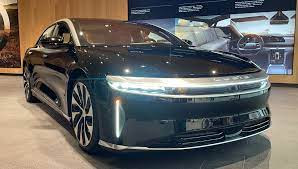













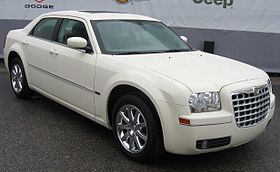
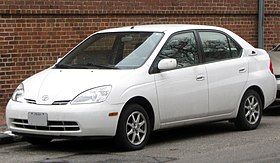






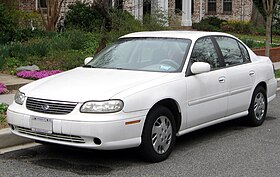

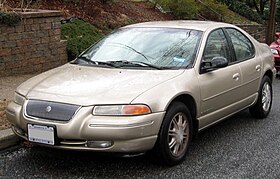



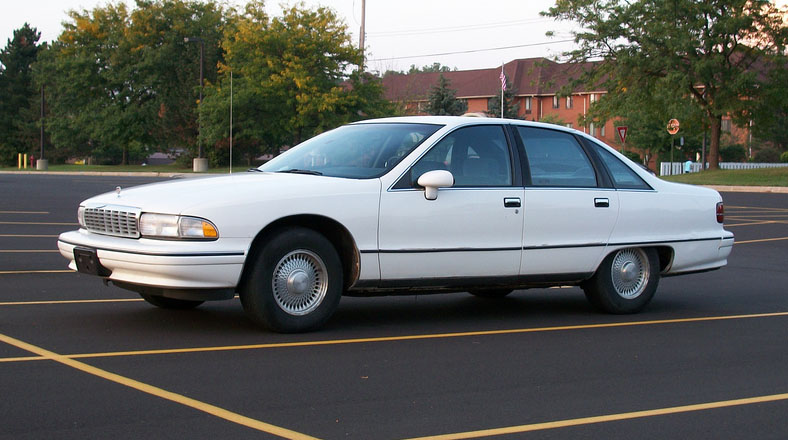


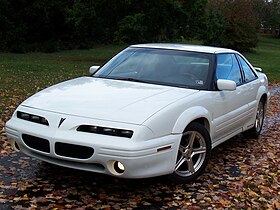
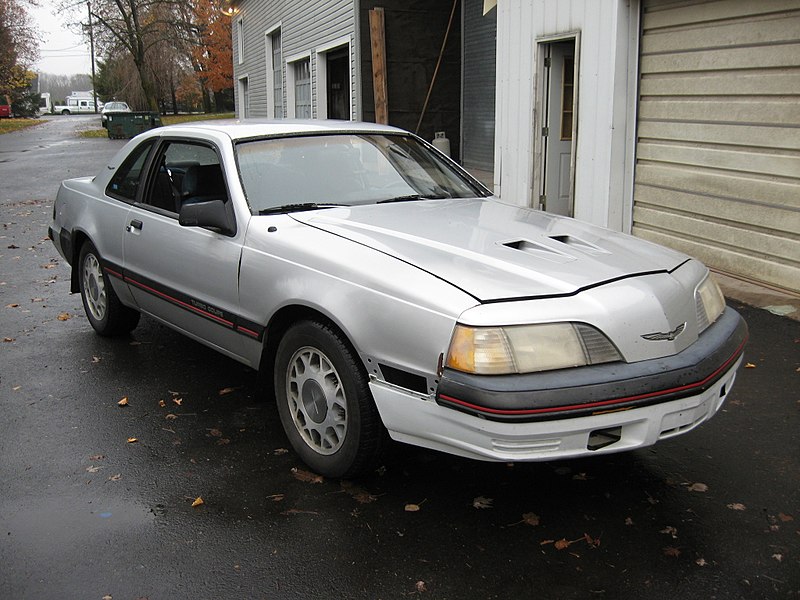

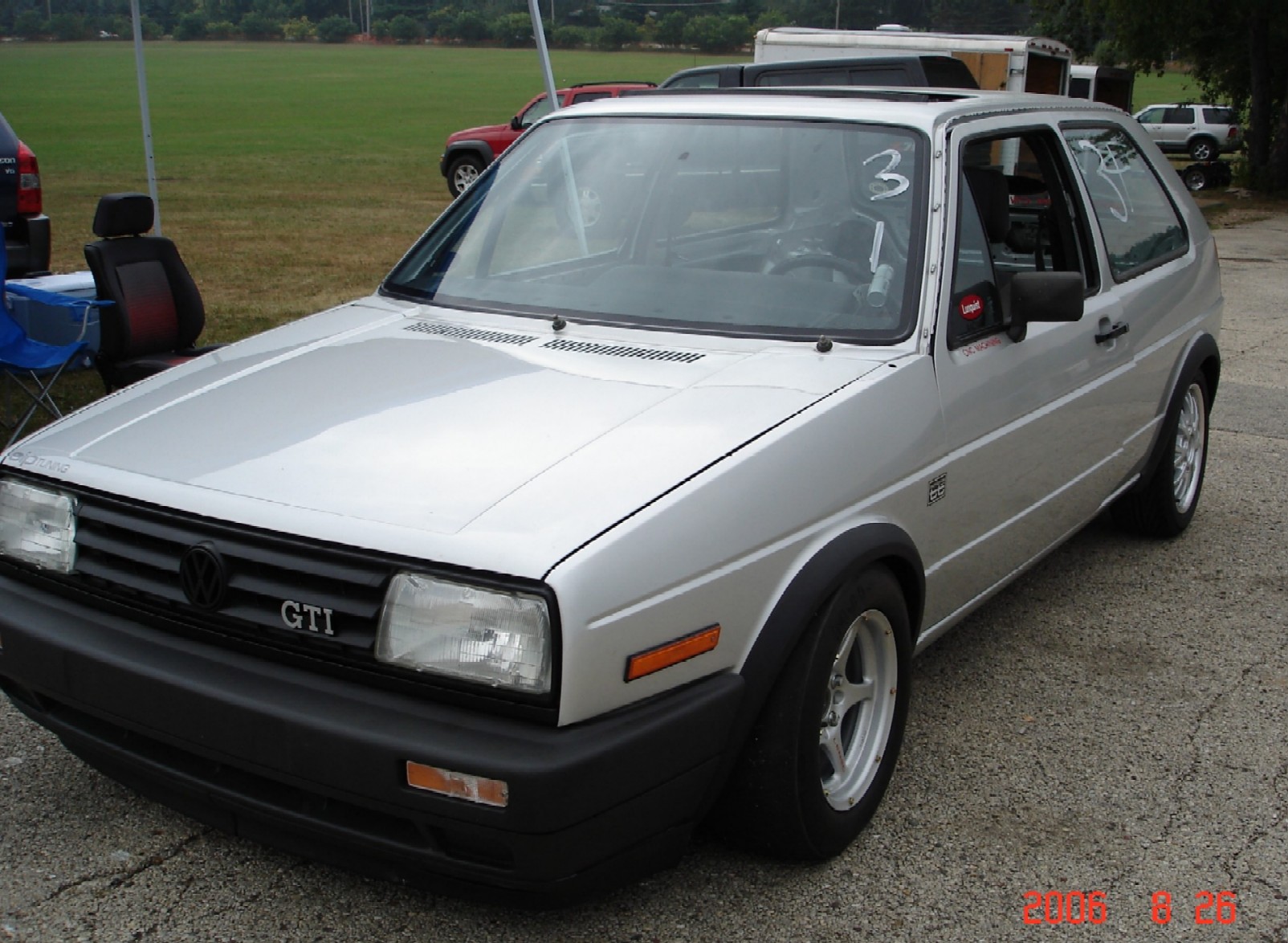


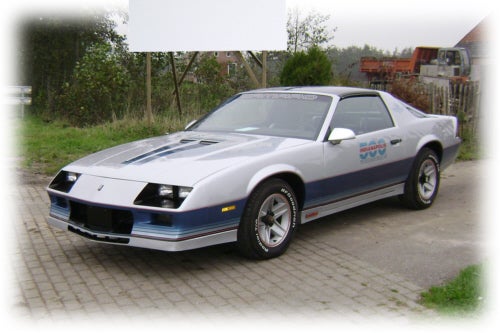

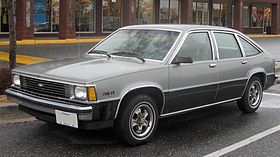






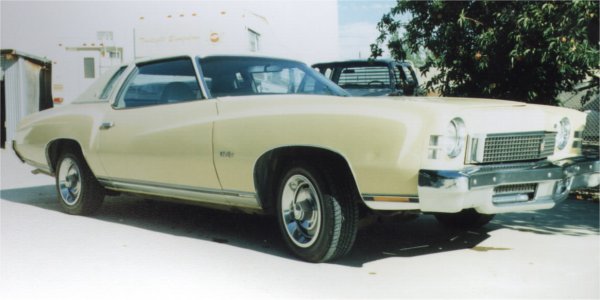
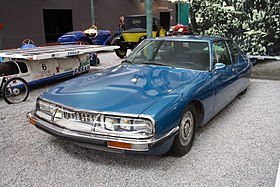


.jpg/280px-'68_Plymouth_Road_Runner_(Les_chauds_vendredis_'10).jpg)



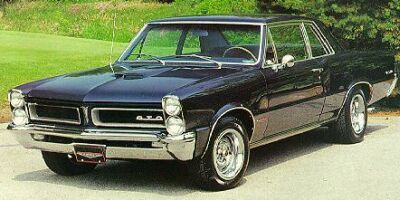



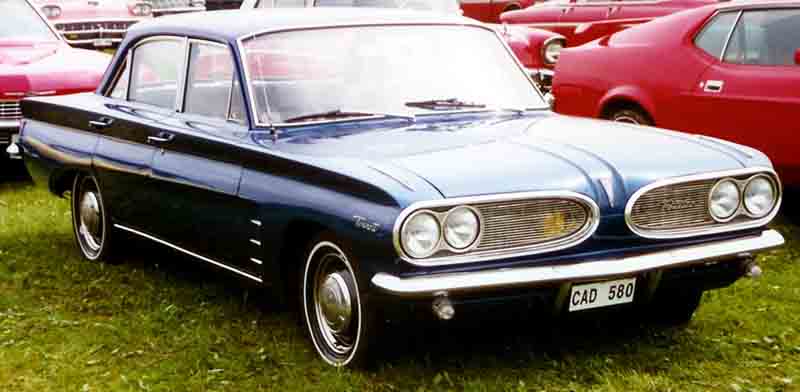


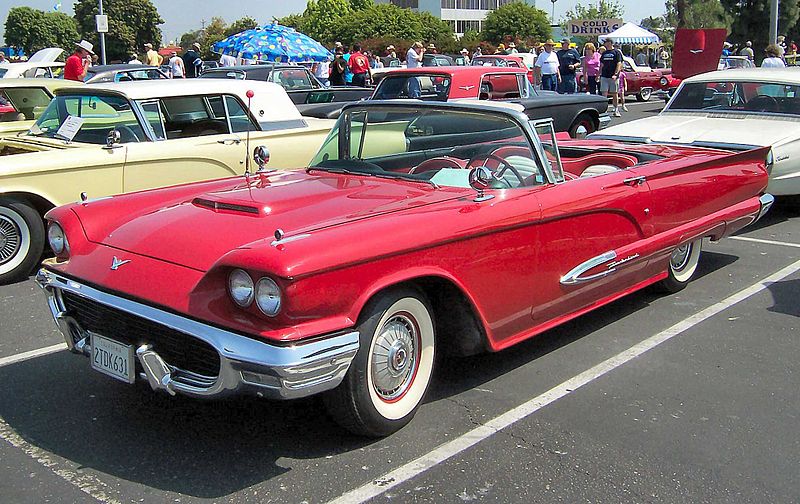

.JPG/800px-'56_Ford_Fairlane_(Auto_classique_Salaberry-De-Valleyfield_'11).JPG)


